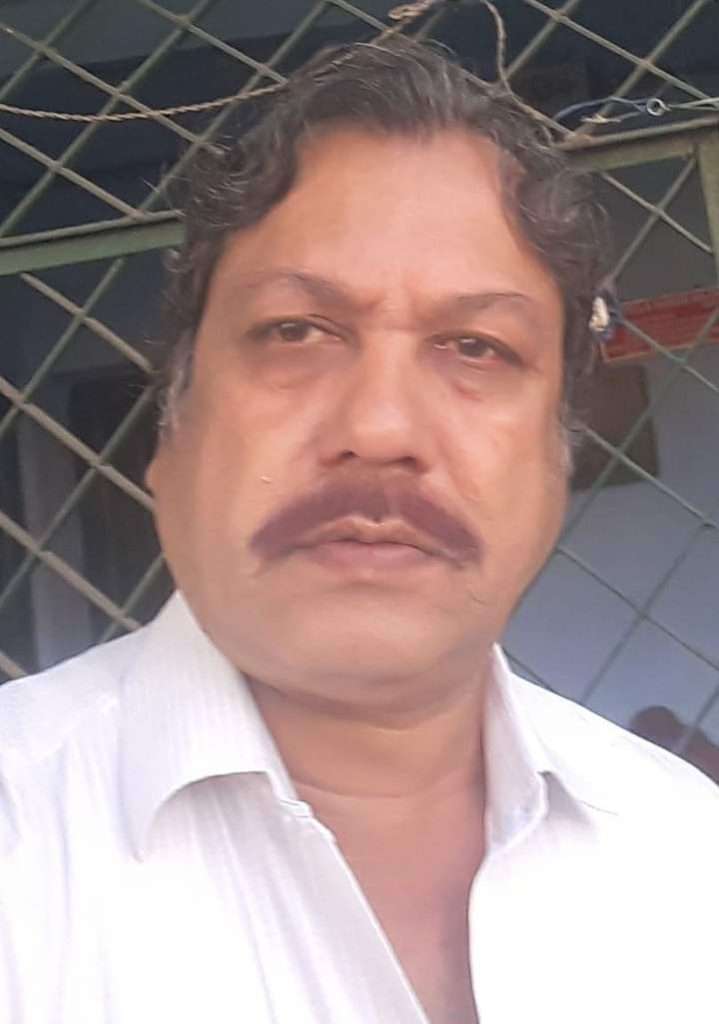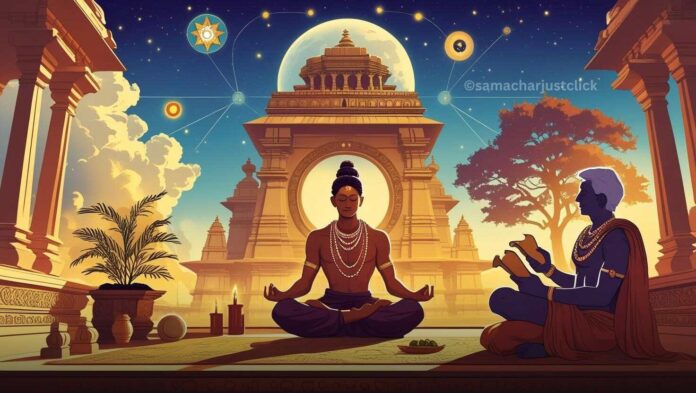Years back, one of my friends expressed his desire to enroll himself in a gymnasium for physical exercises. Accordingly, we visited one. In the gymnasium, we could see many a professional bodybuilder putting in different exercises. Out of curiosity, my friend lifted certain iron instruments and started doing exercises following in the footsteps of the bodybuilder. At this, he got irritated and told my friend, “Do not be in a hurry. Do things in a systematic way. Otherwise, you will get crippled. Recently, one boy had to be admitted to the hospital.” The point is, there is no harm if the modern exercises are done in a systematic way. Age and health conditions are also to be kept in mind. For this, one has to consult a physical trainer and a doctor as per requirement. Another point to be noted is the availability of traditional exercises like Yoga, which, if practised regularly, will not only provide physical but also mental health. Some people also take it as a spiritual exercise. But it is seen that in the present-day society, most people are taking recourse to modern means of exercise at the cost of traditional practices like Yoga. This is due to lack of awareness and a sense of indifference to what we have inherited from our culture and tradition.
Not long ago, while paying a visit to the cities of Haridwar and Rishikesh, it was learnt that the government of Uttarakhand had constituted a team to search for the plant as mentioned in the Ramayana. As we know, while the war between Ram and Ravan was going on, Luxman fell down unconscious on the battlefield with an attack by Indrajeet or Meghnad. Even Ram had lost all hope for his survival. But Sushena Vaidya prescribed a medicinal plant ‘Sanjeevani’ available in the Gandhamardan hills of the Himalayas, which could only save his life. Hanuman flew off to the Himalayas and brought with him the rare medicinal plant, thereby giving a new lease of life to Luxman. Though the life-saving plant of ‘Sanjeevani’ may be mythical till it is really found out, it can hardly be denied that there are several invaluable plants discovered so far in Ayurveda which have contributed to a great extent to the development of medical science. Even today, there is a strong belief in the Uttarakhand Himalayan region that such a plant as ‘Sanjeevani’ still exists, and the government taking a great deal of interest in Ayurveda and its development comes as a welcome step. This puts stress on the great tradition of our country, which may be analysed as follows:
- Medical Science with contributions by Charaka and Shushruta – India had made a lot of progress in medical science and treatment in ancient times with physicians like Charaka and Shushruta around. Both of them had not only recognised a number of diseases but also prescribed medicines and treatment for them. The science of surgery was also known at this time. Charaka Samhita by Charaka is a classical work on Ayurveda. Shushruta Samhita by Shushruta is also a foundational text on Ayurveda, medicine, and surgery. He is often considered as the father of ‘plastic surgery.’
- Development of surgery with transplant of head of Sriganesh – Though the famous head transplant of Sriganesh may appear to be a mythical story in Hindu mythology and not as per a modern medical procedure, yet it predates the idea of complicated surgical operations and grafting of one part of a body on another. Though such head transplants have not yet been possible in modern surgery, yet such an idea did exist in our tradition.
- Development of astronomy – Astronomy had also made a lot of progress in ancient India, and astronomers could calculate the movement of the earth, the sun, the planets, and stars. They had earmarked Navagraha or nine planets in their own way. Aryabhatiya and Arya Siddhanta are two major works by Aryabhatta and throw light on lunar and solar eclipses, the rotation of earth on its axis, and many other aspects of astronomy. Varahamihira was also a great astrologer and astronomer whose notable works include Pancha-Siddhantika, Brihaj-jattaka, and Brihat Samhita.
- Development of mathematics with zero and decimal – There was notable progress in the field of mathematics in ancient India with the invention of zero and the decimal system, which reached the Islamic world and then Europe, thereby revolutionizing mathematics. Aryabhatta and Brahamagupta came out with zero, while Aryabhatta forwarded the decimal system, both of which have made complicated mathematical calculations possible.
- Pushpak Viman and Dhinki Yana – Though the Pushpak Viman of demon Ravan and the Dhinki Yana of sage Narada, which could fly with the speed of mind, may appear to be mythical, yet there can be no denying the fact that the concept of flying was known to the people of ancient India.
- Samanta Chandrashekhar – Samanta Chandrashekhar or Pathani Samanta was an Odia who could study the movement of stars and planets with the help of two bamboo pipes. Now the work is being done by telescopes. The Odia Panjika is based on his astrological and astronomical calculations.
- Kunti – The Mahabharata speaks about Kunti giving birth to four sons, including Karna, and excepting Nakula and Sahadev, through four gods, which is nothing but the example of a surrogate mother. Gandhari giving birth to a hundred sons through pots is indicative of the concept of production of test-tube or similar babies known in ancient India.
- War weapons – The Ramayana and the Mahabharata depict wars and weapons being used. There are Trishul, Sudarshan Chakra, Bajra, Pashupata Ashtra, Narayani Ashtra, Brahmashtra, and others, which are deadly and destructive. These pre-date nuclear bombs, missiles, and other weapons often used in present-day wars.
- Ideas on earth and universe – Since ancient times, Indian astronomers and sages have been toying with ideas about earth, the solar system, and the universe. The rotation and revolution of earth, the sun being the centre of the solar system, eclipses, the universe, and even the multiverse were all known to them. They had also conceived the concept of Navagraha or nine planets in their own way.
- Physical training and skills – Physical skills and training were given importance as part of education. There were archery, mace fighting, sword fighting, and other physical arts. Wrestling was also there. Yoga has also been there since time immemorial through which physical and mental health could be gained. Lord Siva is called the first guru or Adiguru of Yoga.
- Vedas, Shastras, and Puranas – The Vedas, Upanishads, Shastras, and Puranas are all treasures of knowledge. There may be exaggerations and information based on the technical know-how of the time. But this has not prevented western scholars from gaining knowledge from these.
- Scientific spirit in tradition – The Vedas are often considered to be very much scientific. There are also many rituals and practices in the society which may appear to be superstitions but actually are not so. Today, sex with multiple partners is considered to be a reason for the spread of AIDS. In the Indian society, devotion to one husband and one wife has always been advised. Offering guests a pot of water, distancing from people at the time of birth and death, returning home from cremation ground after a bath, and others may appear to be superstitions but actually are based on scientific reasons.
The Indian society is very old and traditional. It has unique social and cultural features hardly found elsewhere, thereby making it second to none. But at the same time, it has also got to keep pace with the outside world. However, this does not mean that the people should remain aloof from what they have inherited from the past. They can also hardly skip the traditions, the Vedas, Shastras, and Puranas as unscientific. In ancient India, the people had developed the concept of nine planets or Navagraha basing on the technical know-how available at the time. Including the Sun, Rahu, and Ketu in the fold does not make it unscientific. Has not modern science excluded Pluto from the solar system, which was once considered to be a planet? India has evolved over the ages with its set of rituals, practices, and traditions which should not be sidelined. Rather, one should be proud of India and its traditions which have contributed so much to the outside world.
(The views expressed are the writer’s own)

Mr. Prafulla Kumar Majhi,
Retired Asst. Director, A. I. R, is an eminent Scholar and freelance writer in English & Odia. His areas of interests are sociocultural, economic, literary, historical and analytical studies and writings.
Email: airprafulla61@gmail.com
Mobile.9861007190

